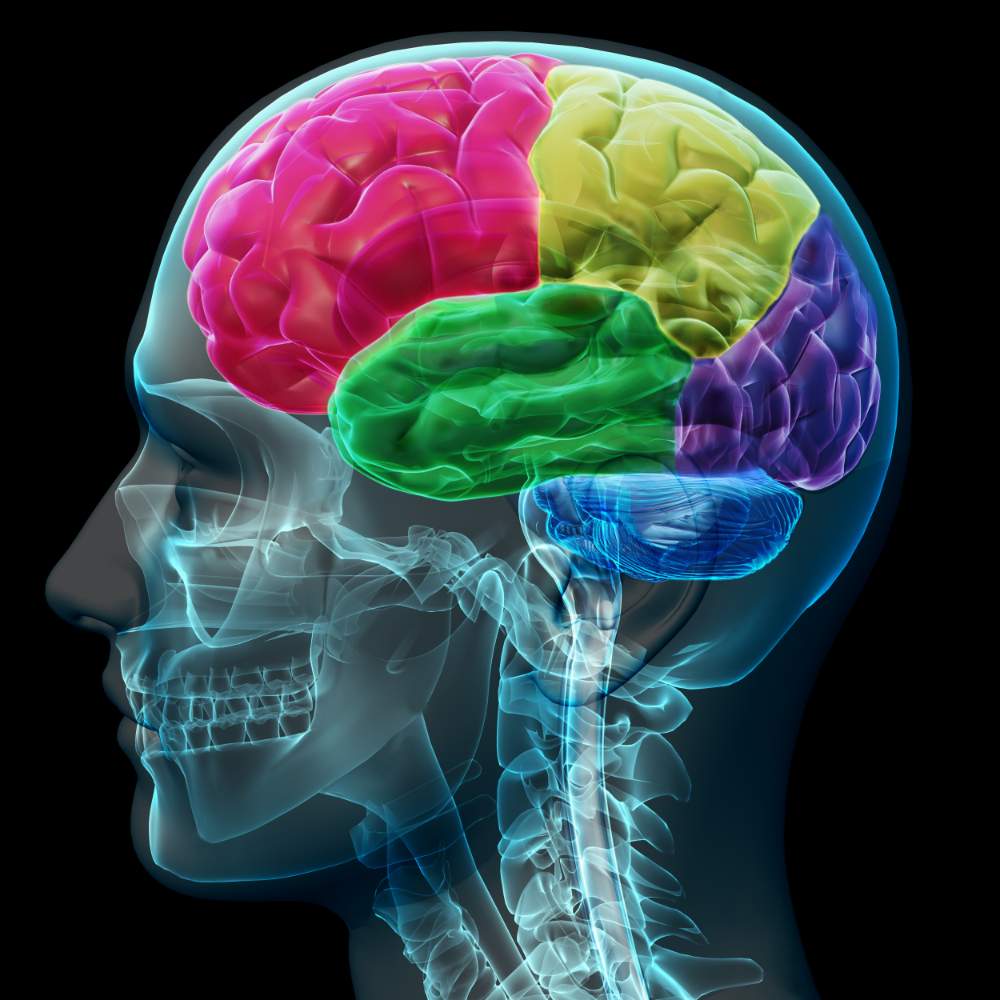How High-Intensity Exercise Transforms Your Brain Power
What is CREB and Why It Matters for Your Brain
Your brain contains a special protein called CREB that works like a master control switch for brain health. Think of CREB as your brain’s construction foreman that tells other proteins what to build and when to build it. When CREB gets activated, it starts a powerful chain reaction that helps your brain grow new connections, form stronger memories, and stay protected against aging and disease.
CREB was first discovered in rat brains and weighs about 43 kDa. To work properly, it needs to be “switched on” by adding a phosphate group to a specific location called serine 133. Once this happens, CREB can begin its job of making your brain work better and stay healthier.
High-Intensity Training as Your Brain’s Ultimate Upgrade
High-intensity training involves exercising at over 90% of your maximum capacity. Unlike regular exercise that uses 50 to 80% of your energy, HIT pushes your body to work much harder for shorter periods. Research shows that HIT has slight advantages over traditional exercise types as it produces more adaptive responses and increases the threshold capacity of individuals in a shorter time.
The exciting discovery is that HIT doesn’t just make your body stronger but also provides powerful benefits for your brain through CREB activation. This connection between intense physical exercise and brain improvement represents a breakthrough in understanding how we can naturally enhance our cognitive abilities.
How HIT Activates Your Brain’s CREB System
The Good Stress Response
During HIT, your body releases beneficial stress hormones called catecholamines. These aren’t harmful stress hormones but rather the beneficial kind that wake up your brain and improve its function. These hormones activate protein kinase A, which then switches on CREB. This can trigger long-term potentiation for memory formation.
9 Steps To Shed 5-10kg In 6 Weeks
Includes an exercise plan, nutrition plan, and 20+ tips and tricks.
Download FreeThe Lactate Brain Connection
When you exercise at high intensity, your muscles produce lactate, which creates that burning sensation. Scientists previously thought lactate was just waste, but research now shows it actually serves as brain fuel. The lactate travels to your brain and helps activate CREB, which then begins building better brain connections.
Multiple Activation Pathways
HIT activates CREB through several different pathways working together like a coordinated team. These include the cAMP/PKA pathway, MAPK signaling, calcium-dependent pathways, and AMPK activation. All these pathways ensure CREB receives the signal to start improving your brain function.
Brain Benefits You’ll Actually Experience
Enhanced Memory and Learning
When CREB gets activated by HIT, it begins producing BDNF, which acts like fertilizer for your brain. BDNF helps grow new brain cells and connections. HIT-induced activation of cAMP/PKA/CREB triggers the brain-derived neurotrophic factor production for BDNF-mediated cognitive functions.
Sharper Focus and Attention
HIT increases production of proteins that help your brain cells communicate more effectively. This means you can focus for longer periods and think more clearly after regular HIT sessions.
Protection Against Brain Aging
As we age, our brains naturally begin to decline. However, HIT can help slow this process by reducing brain inflammation, protecting brain cells from damage, and helping remove toxic waste products from brain cells.
Different HIT Types and Their Brain Effects
Swimming
High-intensity swimming activates CREB binding protein and increases histone acetylation. This helps your brain form long-term memories more effectively. Six weeks of swimming exercise in HIT protocols induce PED4 methylation and activate cAMP/PAK/CREB for synaptic transmission, excitability, and plasticity of neurons.
Running and Treadmill Exercise
Treadmill exercise at 90% VO2 max for 12 weeks significantly increased the IGF-1 in the serum, which enters into the hippocampus of the brain and supports the neuronal development and improves the plasticity of neurons. The hippocampus serves as your brain’s primary memory center. Studies on exercise intensity confirm these brain-derived benefits.
Resistance Training
High-intensity weight lifting activates MAPK/ERK pathways, which help CREB bind to the BDNF gene and increase its production. Research on high-power resistance exercise shows this creates a positive cycle where more BDNF leads to improved brain function.
Cycling
High-intensity cycling activates genes called MEF2 and EP300, which work together with CREB to improve brain development and function. Studies on myocyte enhancer factor 2 regulation demonstrate these exercise-induced benefits.
The Metabolic Brain Enhancement
Your brain consumes approximately 20% of all the energy your body produces. HIT helps your brain use energy more efficiently through several mechanisms.
Improved Brain Fuel Systems
HIT protocols increase the glycolytic enzymes for improving brain metabolic functions. This means your brain becomes more efficient at using glucose for energy.
Cellular Cleanup Activation
HIT helps activate autophagy in brain cells. Autophagy functions like a cellular cleanup crew that removes damaged parts and maintains cell health. Exercise-induced activation of autophagy promotes neuroprotection by excluding toxic metabolites and maintaining brain tissue health.
Enhanced Blood Flow
HIT improves blood flow to your brain, delivering more oxygen and nutrients while removing waste products more efficiently.
Protection Against Brain Diseases
Alzheimer’s Disease Defense
Research demonstrates that HIT can help protect against Alzheimer’s disease by reducing the buildup of harmful proteins called amyloid beta. HIT ameliorates the Aβ accumulation-induced memory deficits, partially mediated by CREB transactivation disruption in the AD neurons. Studies on high-intensity physical activity show these protective effects on cerebrospinal amyloid-β levels.
Depression and Anxiety Relief
HIT increases production of beneficial brain chemicals and helps regulate stress hormones. The CREB activation from HIT can improve mood and reduce symptoms of depression and anxiety. Research on SIRT1 and exercise-improved depression supports these mental health benefits.
Age-Related Cognitive Decline Prevention
Regular HIT can help maintain cognitive function as you age by keeping brain cells healthy and promoting growth of new connections.
Critical Factors for Success
Intensity Makes the Difference
Not all exercise affects CREB equally. Among the protocols of exercise including types, duration, and frequency, the intensity has been reported to be the most effective in triggering CREB-mediated molecular signaling. This means you need to push yourself to achieve the brain benefits.
Timing and Duration Considerations
Research shows that different HIT protocols produce different effects. Studies found that 6 to 12 weeks of regular HIT sessions work best for brain benefits.
Individual Response Variations
Everyone responds differently to exercise based on their genetics, age, and current fitness level. What works effectively for one person might need adjustment for another.
Action Steps for Better Brain Health
Your Brain Training Protocol
- Start with Short HIT Sessions: Begin with 10 to 15 minutes of high-intensity exercise 2 to 3 times per week.
- Mix Different Exercise Types: Try swimming, running, cycling, and resistance training to activate different pathways.
- Focus on Consistency: Regular sessions prove more important than perfect intensity.
- Monitor Your Recovery: HIT demands significant energy, so ensure you get adequate rest between sessions.
- Combine with Healthy Habits: Good sleep, proper nutrition, and stress management all support the brain benefits of HIT.
The Scientific Bottom Line
High-intensity training serves as a master key that unlocks your brain’s potential. By activating CREB and its network of brain-building proteins, HIT doesn’t just strengthen your body but also sharpens your brain, increases its resilience, and provides better protection against aging and disease.
CREB-like proteins are crucial for designing brain architecture by restoring neuronal signals and preventing local neuronal loss. When you perform HIT regularly, you essentially provide your brain with the tools it needs to rebuild and improve itself.
The science clearly demonstrates that if you want a healthier, sharper brain that remains strong as you age, high-intensity training should become part of your routine. Research comparing high intensity interval training to continuous training confirms these cognitive benefits. Start small, maintain consistency, and watch as your brain power grows alongside your physical fitness.
For those interested in diving deeper into the scientific mechanisms, comprehensive research on CREB activation and brain health provides detailed molecular insights into how high-intensity training transforms brain function at the cellular level.


